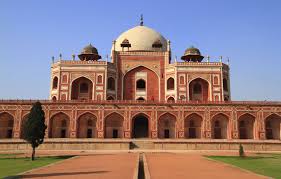The Mughal Empire was a prominent and influential empire in the Indian subcontinent, known for its contributions to culture, architecture, and governance. Here are key points about its history, culture, and significance:
Origins and Expansion
- Foundation: The Mughal Empire was founded by Babur, a descendant of Timur and Genghis Khan, after his victory at the Battle of Panipat in 1526.
- Expansion: The empire expanded under successive rulers, reaching its zenith under Akbar, Jahangir, Shah Jahan, and Aurangzeb.

Key Figures
- Babur: Founder of the Mughal Empire, he established Mughal rule in northern India.
- Humayun: Babur’s son, who faced challenges but ultimately re-established Mughal authority.
- Akbar: Known for his administrative reforms, religious tolerance, and cultural achievements, he expanded the empire significantly.
- Jahangir: Continued Akbar’s policies and patronized the arts.
- Shah Jahan: Best known for commissioning the Taj Mahal, he presided over the empire during its architectural zenith.
- Aurangzeb: Expanded the empire to its greatest extent but faced increasing internal strife and resistance.
Administration and Society
- Centralized Government: The Mughals established a centralized system of administration with a bureaucracy that managed various aspects of governance.
- Mansabdari System: A military and administrative system that allocated land revenues to officers in exchange for their service.
- Religious Policy: Akbar promoted a policy of religious tolerance, while later emperors, such as Aurangzeb, enforced Islamic laws more strictly.
Culture and Achievements
- Architecture: The Mughal era is renowned for its architectural achievements, including the Taj Mahal, Red Fort, Humayun’s Tomb, and Fatehpur Sikri.
- Art and Literature: Mughal painting flourished, characterized by detailed miniatures and portraits. Persian literature and poetry were also promoted.
- Gardens: The Mughals introduced the Persian-style charbagh (four-part) gardens, which became a significant feature in Mughal architecture.
- Science and Learning: The Mughals supported advancements in various fields, including astronomy, medicine, and engineering.
Decline and Fall
- Internal Strife: The empire began to decline in the late 17th century due to internal conflicts, administrative inefficiencies, and the strain of maintaining a vast territory.
- Maratha and Sikh Resistance: The rise of the Maratha Empire and the Sikh Empire further weakened Mughal authority.
- Colonial Encroachment: The British East India Company increasingly exerted control over Mughal territories, culminating in the decline of Mughal power.
- End of the Empire: The Mughal Empire effectively ended after the Indian Rebellion of 1857, when the British deposed the last Mughal emperor, Bahadur Shah II, and established direct colonial rule over India.
Legacy
- Cultural Influence: The Mughal Empire left a lasting legacy in India, influencing its culture, cuisine, language, art, and architecture.
- Administrative Practices: Many administrative practices and institutions established by the Mughals influenced later Indian governance.
- Syncretic Culture: The Mughals fostered a syncretic culture that blended Persian, Indian, and various regional elements, which continues to be a significant aspect of South Asian identity.
The Mughal Empire remains one of the most important periods in Indian history, known for its rich cultural contributions and its impact on the development of the region.
4o
